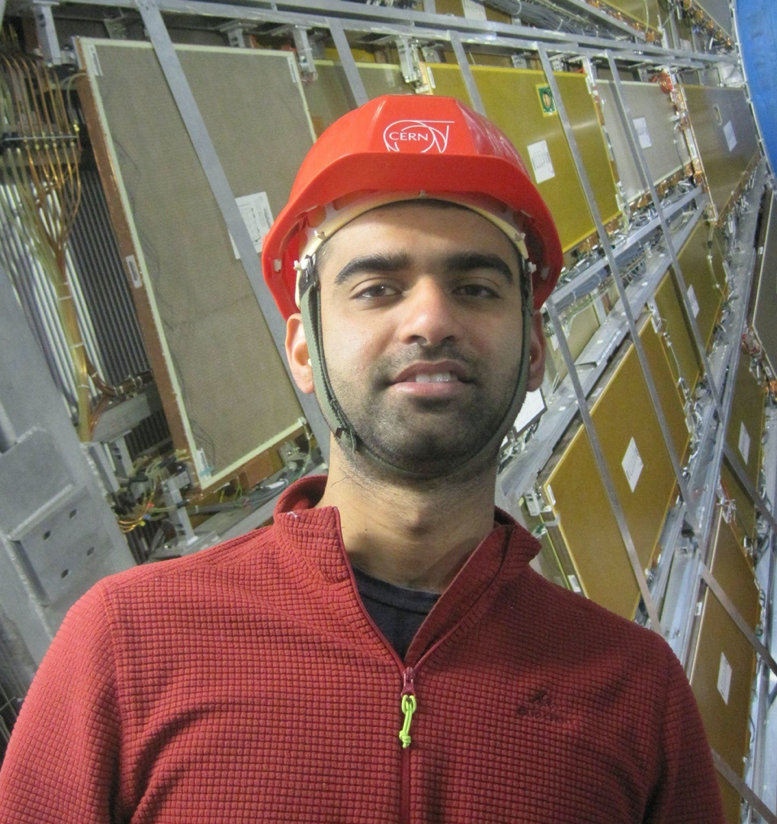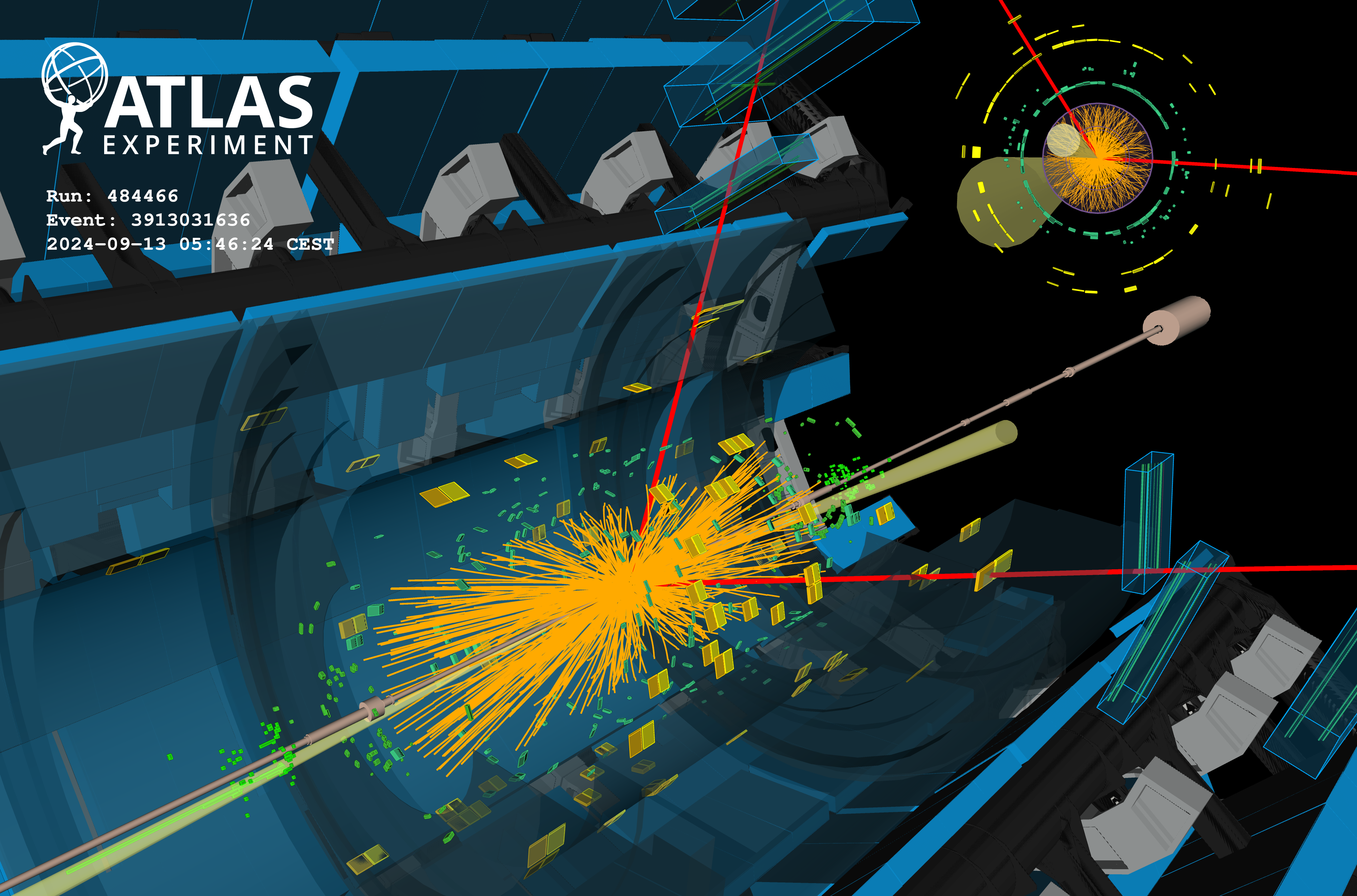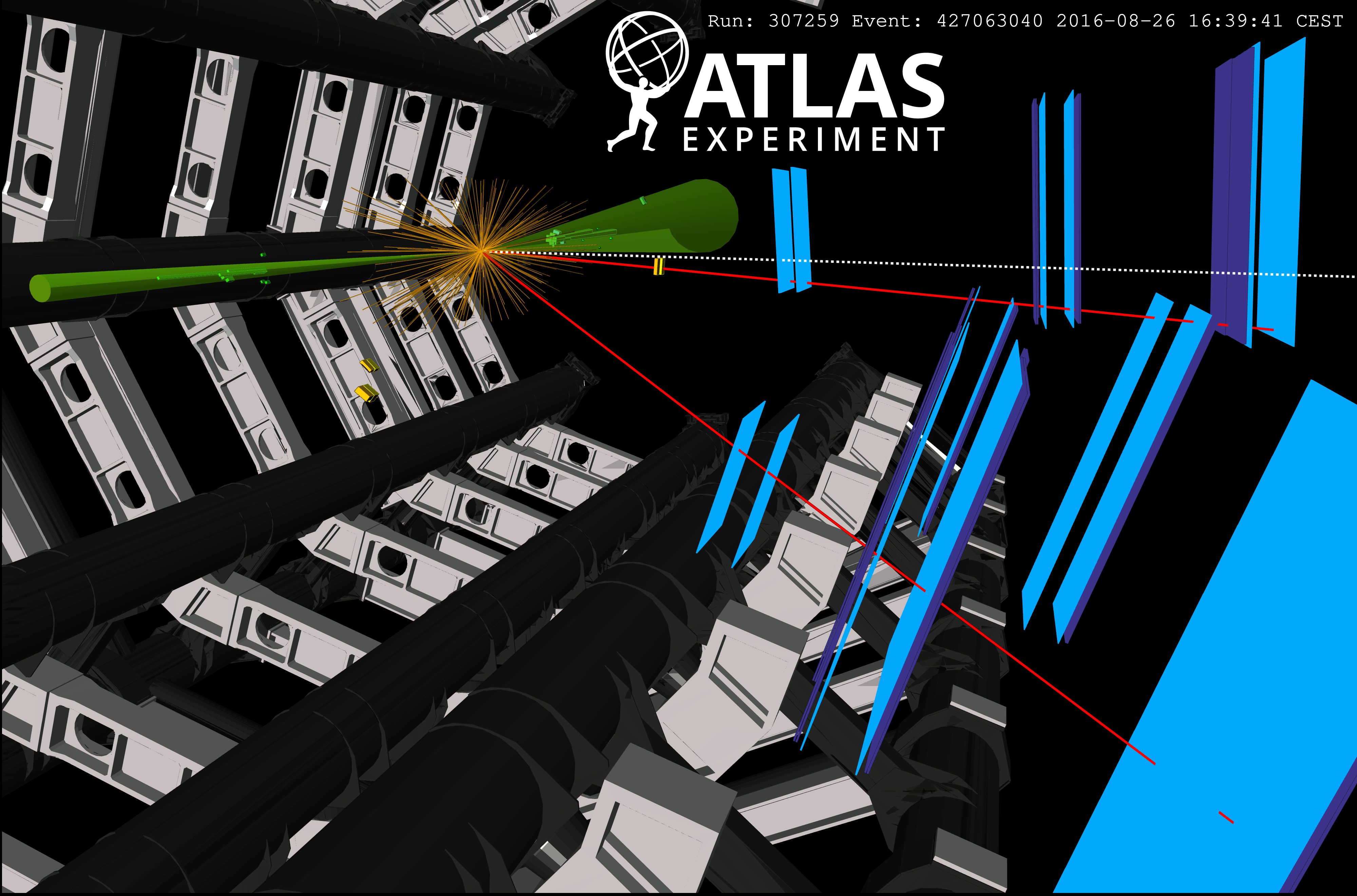ATLAS pushes forward the search for a charged Higgs boson
20 September 2021 | By
Most days we wake up and we still cannot believe we are going through a pandemic. It seems like a sci-fi series episode. But we are human beings and we have the amazing ability to adapt in order to survive, so that’s what we did. We learned to use face masks, to keep distance and to properly wash our hands at the rhythm of a 30 second song. We also learned how to work from home and collaborate with our coworkers virtually. As scientists, we also have had to adapt to a new mode of communication: virtual conferences and workshops. While we miss the enriching and lively atmosphere of an in-person conference, scientific discourse has continued through this platform, allowing for the dissemination of our work in these challenging times.
The Charged-Higgs@LHC workshop was among the recent meetings in particle physics and took place on August 30-31, 2021. The workshop has an interesting history as it is a biennial event which started in 2006 at Uppsala University and was held there till 2018; it went into ‘hibernation’ due to the pandemic. The workshop was revived this year by a group of African institutions who collaborated with Uppsala in the past. The hope and intent is to continue hosting the workshop biennially in Africa in order to encourage particle physics research in the continent.
This two-day event was dedicated to discussing both the theoretical developments in the field and the status of experimental results at the LHC. Both ATLAS and CMS presented overviews for their searches and highlighted current results for singly and doubly charged Higgs bosons in different production and decay modes.
Ever since the 2012 discovery of the Higgs boson – a neutral particle – physicists have been asking a key question: could it be possible to find a charged version of this particle?
But what makes a charged Higgs boson so important that it has its own workshop? Since the 2012 discovery of the Higgs boson, which is a neutral particle, physicists have been asking a key question: could it be possible to find a charged version of this particle?
There are many theories that predict the existence of more than just one Higgs boson; they describe what is called an ‘extended Higgs sector’ with several Higgs bosons with different properties. These theories are very appealing to particle physicists because they offer explanations for observed phenomena, such as dark matter, that the Standard Model cannot explain. Additionally, particles have a property called spin and we find that spin-½ and spin-1 particles come in both charged and neutral states. However, so far we have not discovered a charged spin-0 elementary particle. For all these reasons, searching for a charged Higgs boson is very exciting and its discovery would bring us closer to a more complete understanding of Nature.

During the Charged-Higgs@LHC workshop, the ATLAS Collaboration showed some of their latest results on searches for these particles. Since these bosons are not stable particles, they decay into lighter particles that are then detected by the experiment. Different analyses target different decay modes that shape the final search. A special feature of the new results presented was that the searches focused on a charged Higgs boson with a lighter mass than the top quark (the heaviest-known elementary particle). These light charged Higgs bosons are predicted to be the dominant production mode at the LHC in some beyond Standard Model theories and thus very well motivated to hunt for.
One important result presented was the search for a charged Higgs boson coming from a top quark and decaying into a charm and a bottom quark, H+→ cb. It’s a complex search because the final state is characterised by the presence of many physical objects, including leptons and many particle jets, and a lot of processes from the Standard Model show the same topology. So, in order to separate the potential signal from the background, we developed an elaborate analysis strategy that included machine learning techniques. This is the first time that ATLAS has looked into this particular decay mode, and promising results were shown during the workshop.
Theoretical talks at the workshop covered an overview of the phenomenological motivations for extensions of the Higgs sector. There was a particular emphasis on the need to explore production and decay modes in which the H+ appears simultaneously with a neutral Higgs boson. These bosonic production and decay modes have not been studied extensively at the LHC and can offer a new discovery channel for a charged Higgs boson.
In light of these theoretical developments, ATLAS presented its first results on the search for a charged Higgs boson decaying to a W and A boson, H+→ WA. The A boson is another hypothesised Higgs boson which is neutral like the Standard Model Higgs boson, but much lighter. This search is a rare example of an analysis involving two different Higgs bosons!
This search was conducted by looking for the decay of the A boson to a pair of muons. Muonic decays of the A boson have the advantage of featuring a distinct narrow peak which would appear above the background and allow us to discover it. The figure shows the di-muon mass spectrum that was studied in this analysis to search for the A particle decaying from the H±. It shows that the data and the background predictions of the Standard Model are in agreement; thus evidence of a charged Higgs decay was not found in this channel with the current dataset. While we did not discover something new, we can still derive important conclusions from this analysis. For example, we were able to calculate upper limits on what are called the ‘branching ratios’ for this signal model i.e. an upper bound on the fraction of events that could decay in this mode in top-quark pair events. This information allows us to rule out certain theoretical scenarios involving charged Higgs bosons.
In summary, this meeting served as an excellent opportunity to share the exciting developments in both theory and experiment within the field. The ATLAS results obtained for the H± → cb and H± → WA are both intriguing and give us motivation to keep looking for a light charged Higgs boson. The virtual nature of the workshop certainly limited the opportunity to have those spontaneous and lively discussions during coffee breaks and group dinners that we all look forward to. However, we still feel extremely grateful that we can continue to contribute to this science during a time where so many have been forced to abandon their careers of choice.





